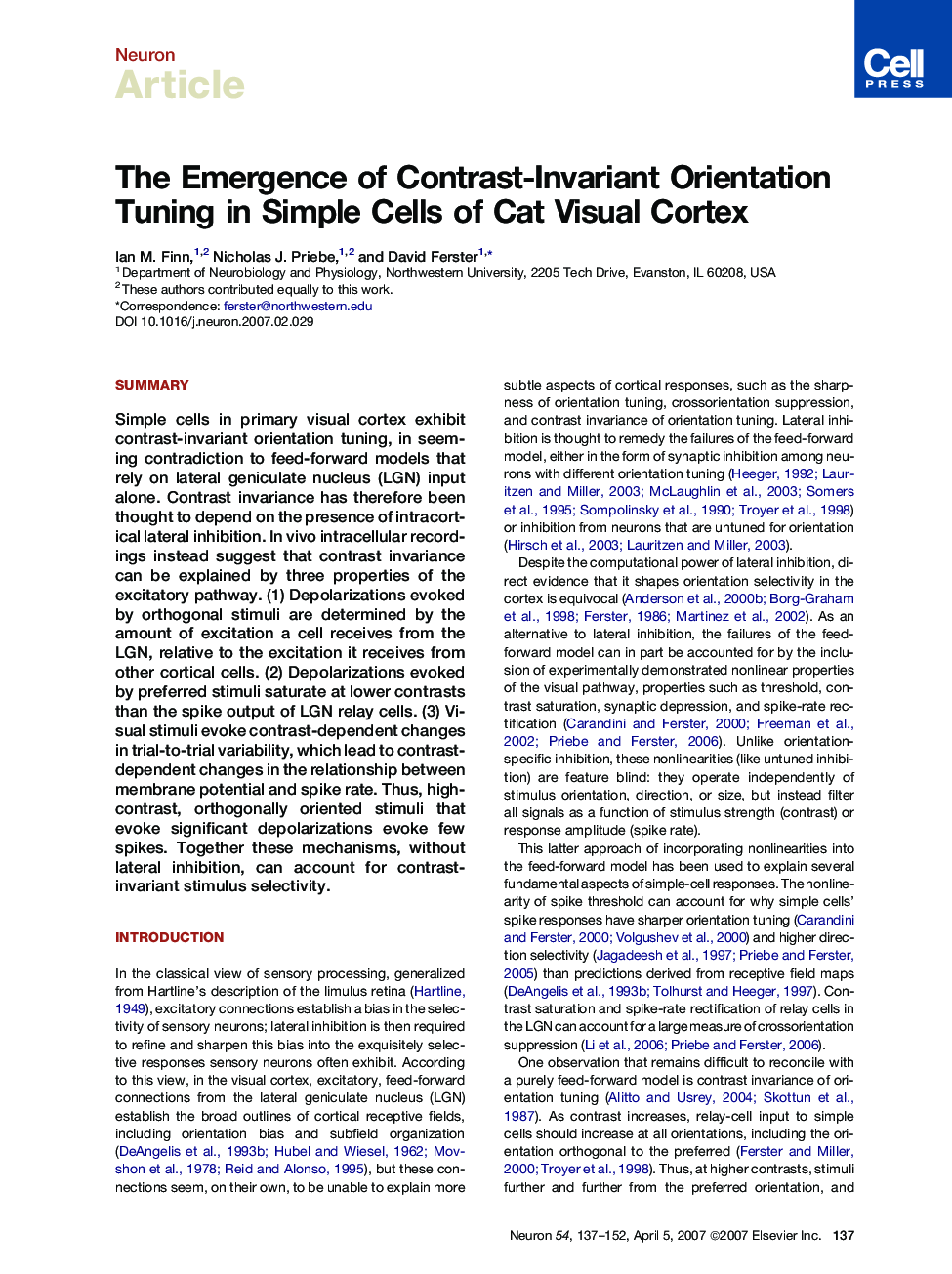| Article ID | Journal | Published Year | Pages | File Type |
|---|---|---|---|---|
| 4322675 | Neuron | 2007 | 16 Pages |
SummarySimple cells in primary visual cortex exhibit contrast-invariant orientation tuning, in seeming contradiction to feed-forward models that rely on lateral geniculate nucleus (LGN) input alone. Contrast invariance has therefore been thought to depend on the presence of intracortical lateral inhibition. In vivo intracellular recordings instead suggest that contrast invariance can be explained by three properties of the excitatory pathway. (1) Depolarizations evoked by orthogonal stimuli are determined by the amount of excitation a cell receives from the LGN, relative to the excitation it receives from other cortical cells. (2) Depolarizations evoked by preferred stimuli saturate at lower contrasts than the spike output of LGN relay cells. (3) Visual stimuli evoke contrast-dependent changes in trial-to-trial variability, which lead to contrast-dependent changes in the relationship between membrane potential and spike rate. Thus, high-contrast, orthogonally oriented stimuli that evoke significant depolarizations evoke few spikes. Together these mechanisms, without lateral inhibition, can account for contrast-invariant stimulus selectivity.
